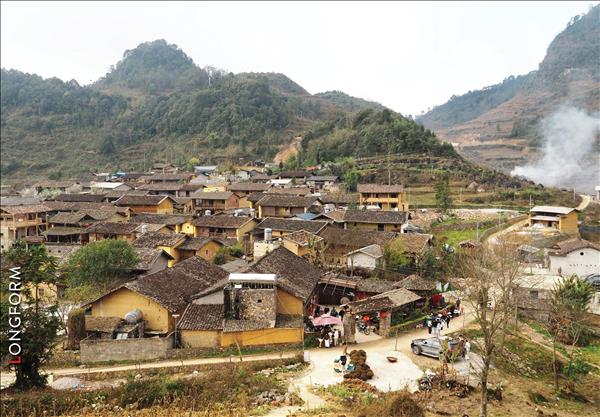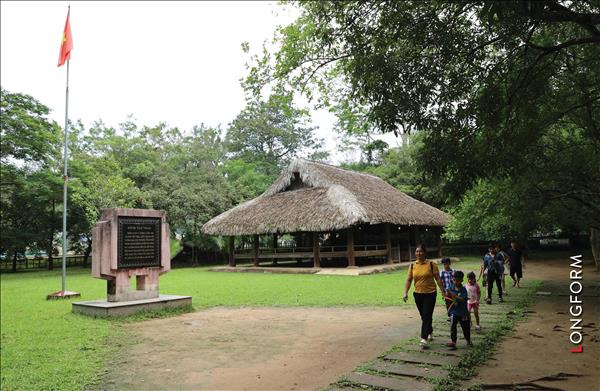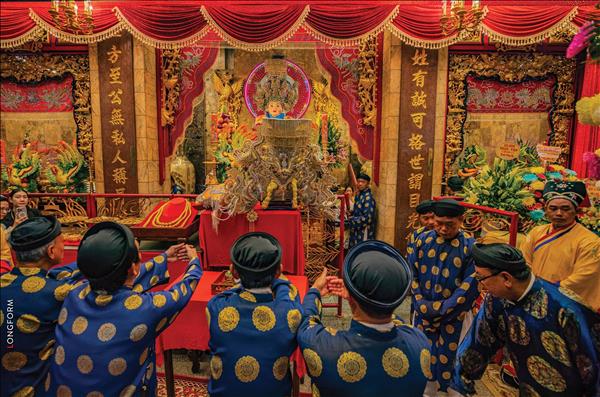A unique craft
We visited Ninh Thuan, the driest region in Vietnam, during the hottest days of the summer. While the ongoing COVID-19 pandemic was hitting tourism hard along with other economic activities nationwide, it seemed to have barely touched the life of Bau Truc potters in Phuoc Dan, Ninh Phuoc district. They, as usual, were busy rolling out new batches of ceramics.
| Bau Truc is one of the oldest pottery villages in Southeast Asia. Over 90% of 500 families in Bau Truc village are making pottery. |
To show their gratitude toward the forefather of their craft, Bau Truc villagers built a temple dedicated to Poklong Chanh and pray for him during Kate, the Cham’s biggest festival held annually in the seventh lunar month.
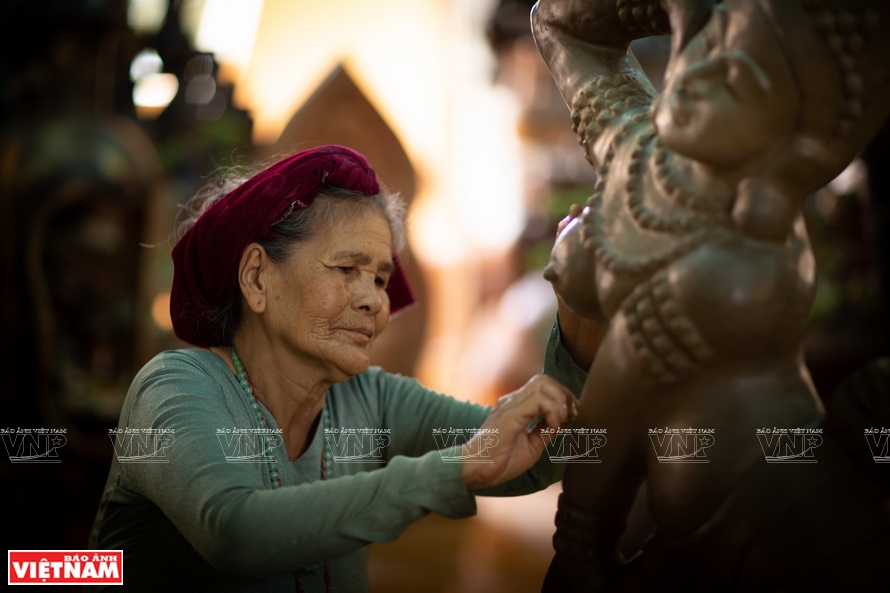 Artisan Truong Thi Gach, 80, finishes her creation of an Apsara dancer. Photo: Nguyen Luan 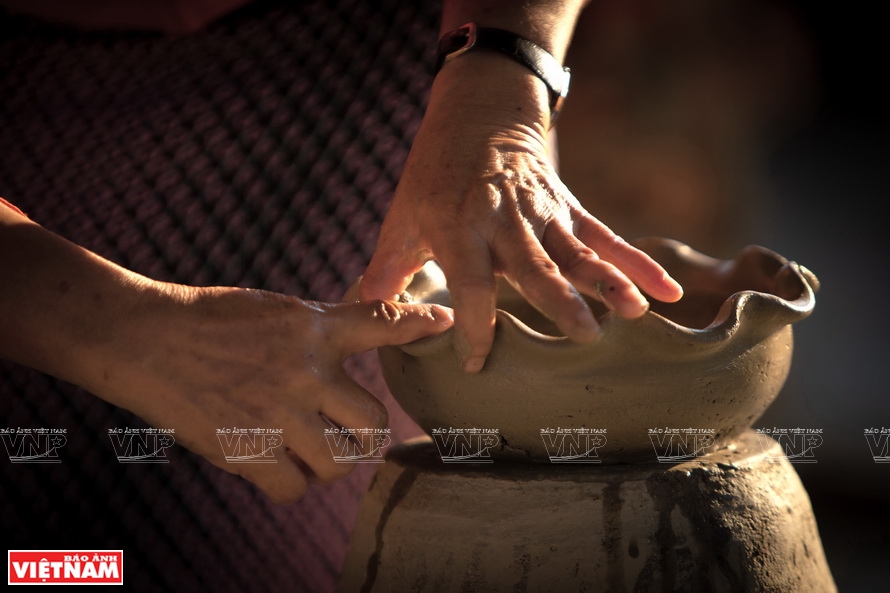 A Bau Truc potter turns clay into unique pottery items. Photo: Nguyen Luan 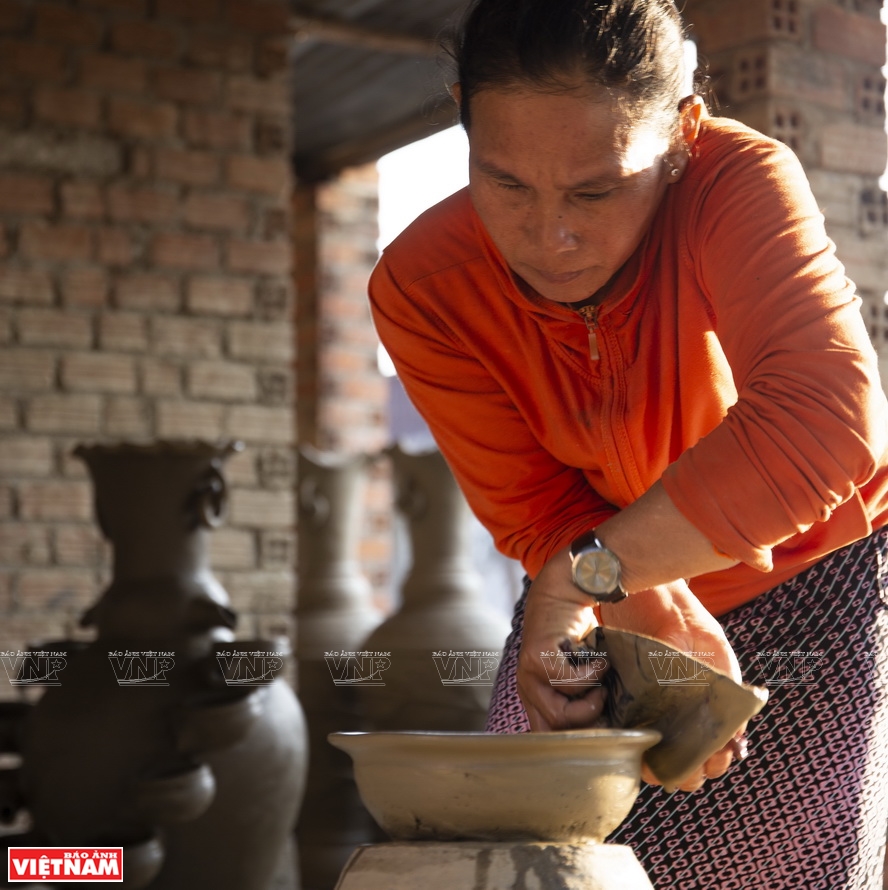 Artisan Dang Thi Trang uses fabric to make a pottery product. Photo: Le Minh 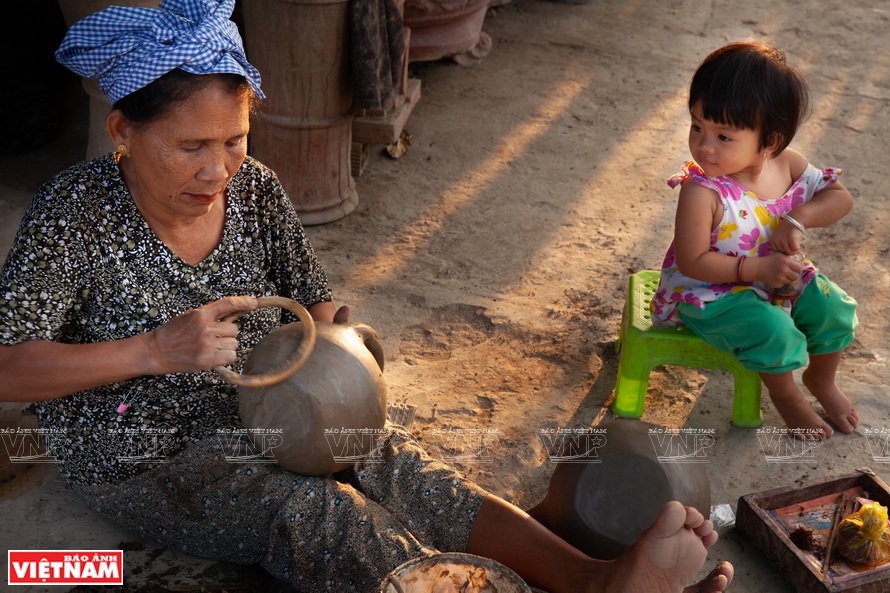 After drying the products, the artisans finish their work. Photo: Le Minh 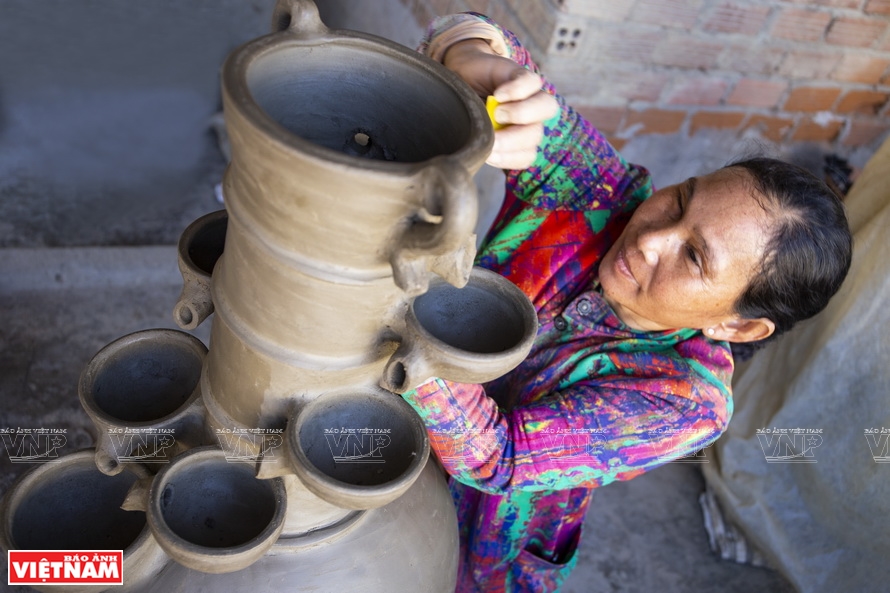 An artisan checks the shape of a product. Photo: Le Minh 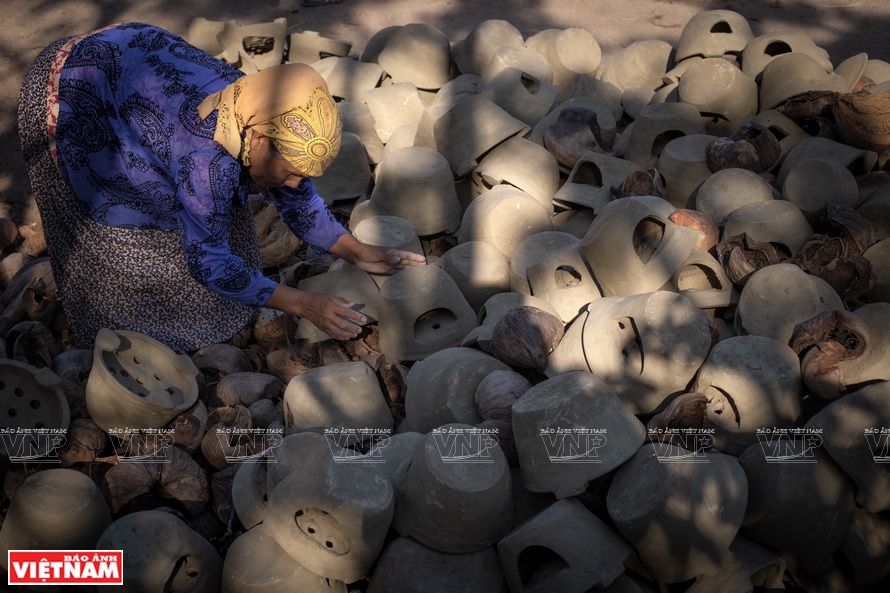 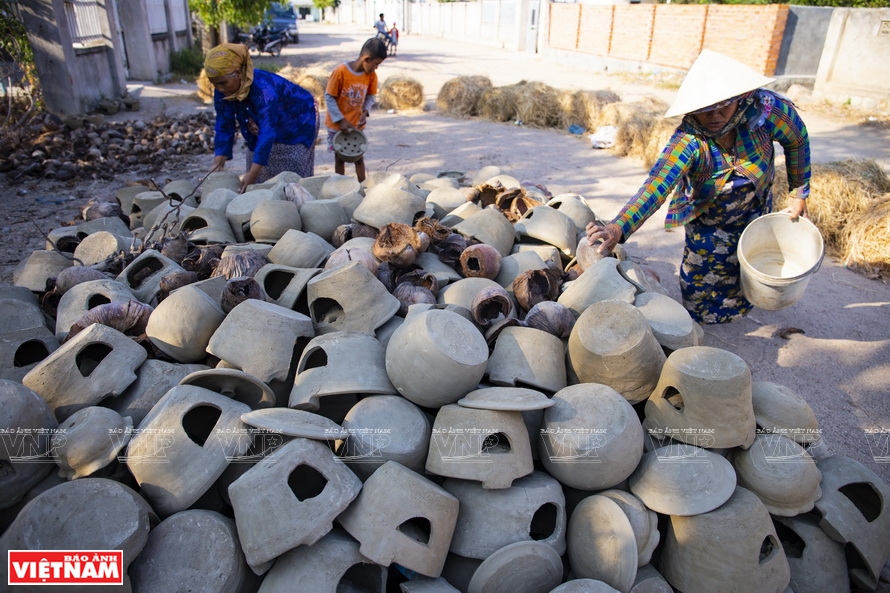 Bau Truc pottery products are fired using straw and wood outside. Photo: Nguyen Luan 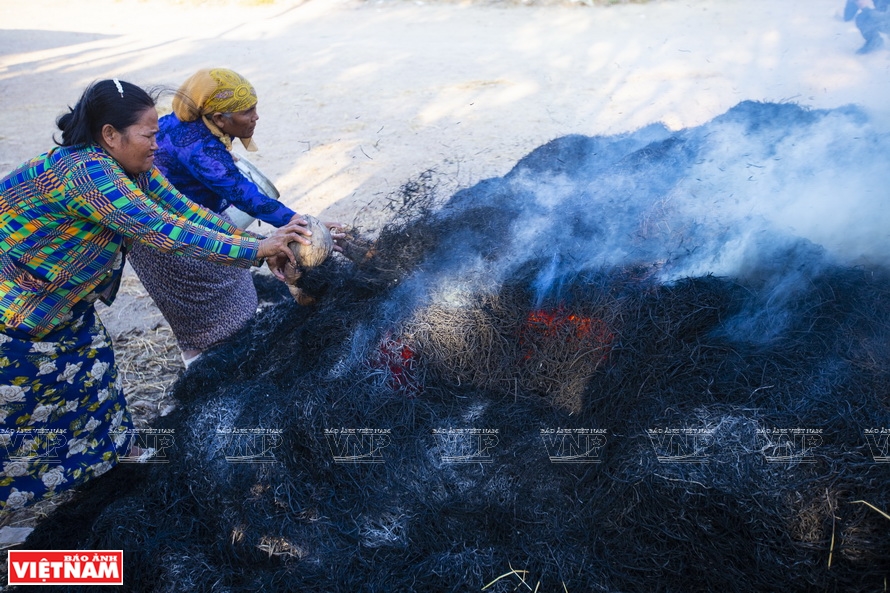 The firing process takes from five to eight hours depending on the size of the product. Photo: Le Minh 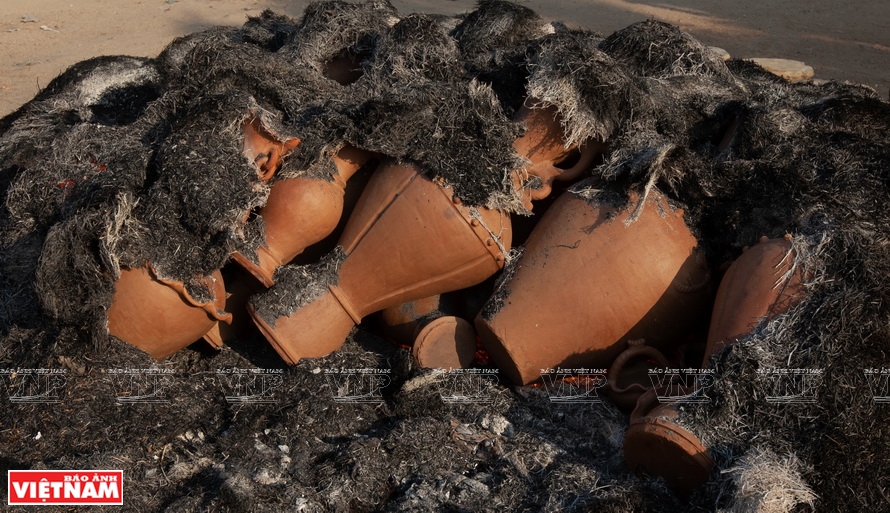 Pottery pieces after firing. Photo: Nguyen Luan 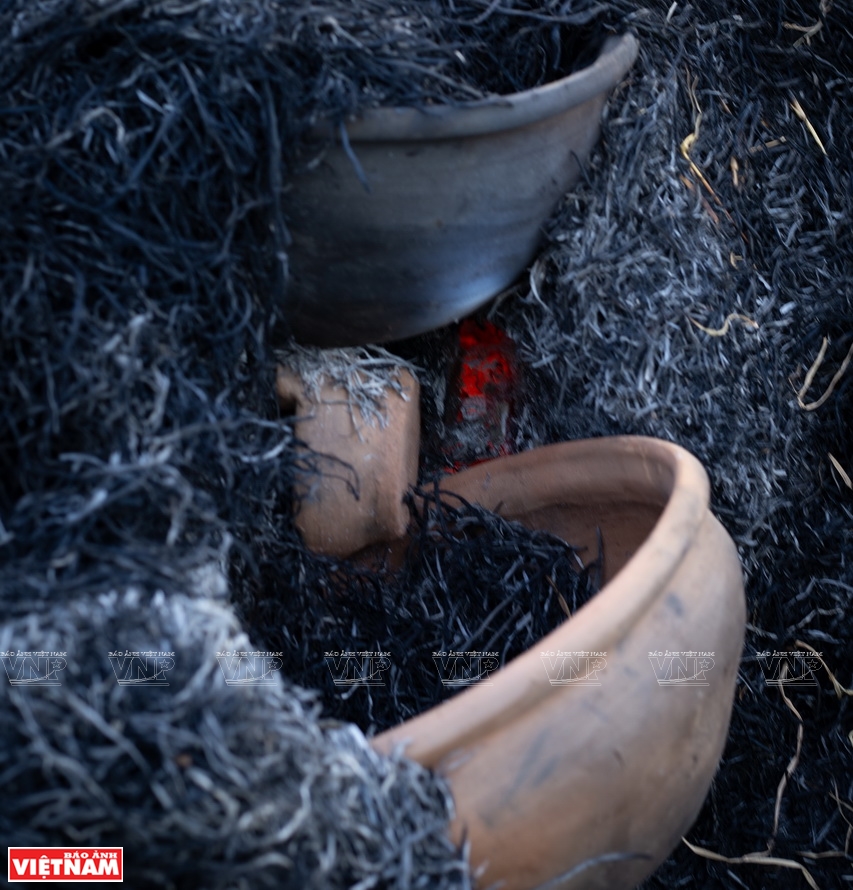 Firing using straw helps to keep the color of the clay. Photo: Nguyen Luan Firing using straw helps to keep the color of the clay. Photo: Nguyen Luan |
We met Truong Thi Gach, an 80-year-old potter who has been making ceramics her entire life. Gach said her mother learnt the craft from her grandmother and then passed it down to Gach when she was 10. Gach is now teaching the craft to her children. In Bau Truc, only women make pottery while the men help in the firing process by collecting firewood and straw.
According to Gach, Bau Truc pottery is distinctive from any other type in the world because it is handmade at all stages. While other pottery is made from a rotating wheel, Bau Truc is not. Bau Truc potters use their feet to move around the clay mixture while using their hands to shape the pottery. Every single pottery item in Bau Truc is made by hand without using any molds.
The pottery making process involves many stages. Gach said that the first and most important of which is selecting the clay which is the secret behind the uniqueness of Bau Truc pottery.
She said the clay used to make Bau Truc pottery must be taken from the soil near the village river. The clay is then dried, and soaked in water to become soft. After that, it is mixed with sand and water, and then kneaded until it turns into a flexible and smooth mixture. That is when it can be used for shaping.
Bau Truc pottery is also fired in a different way. The firing process, which only uses wood and straw, takes from five to eight hours depending on the size of the product.
According to Cham tradition, a potter must choose a good date for firing the pottery and before starting the firing process, he must conduct an offering ritual dedicated to the gods and forefathers of the craft, praying for their support for turning out beautiful items.
Bau Truc products characterize the life, culture and beliefs of locals. They range from simple home utensils such as a jar, pot, pan or kettle, to objects of worship, statues, reliefs and decorative patterns. The patterns on Bau Truc pottery ware mostly portray natural scenery and show the Cham’s beliefs.
Symbolizing Cham culture
Today, old Bau Truc village is a popular cultural and tourist attraction in Ninh Thuan. In 2008, the village set up its pottery cooperative which has become a place to showcase the art of Bau Truc pottery making. Visitors to the cooperative can select beautiful pottery items from thousands of products on display while at the same time, exploring how they are made.
For researchers, the Cham and their original cultural heritages remain mysterious and their pottery making is an example.
Dr. Shimoka Sakaya, a Japanese researcher, said that the Cham could preserve the centuries-old pottery craft with its quintessence and primitive beauty, which proved the unique and long-standing values of Cham pottery.
 Po Klong Garai temple, a religious complex decorated with Cham pottery patterns. Photo: Nguyen Luan 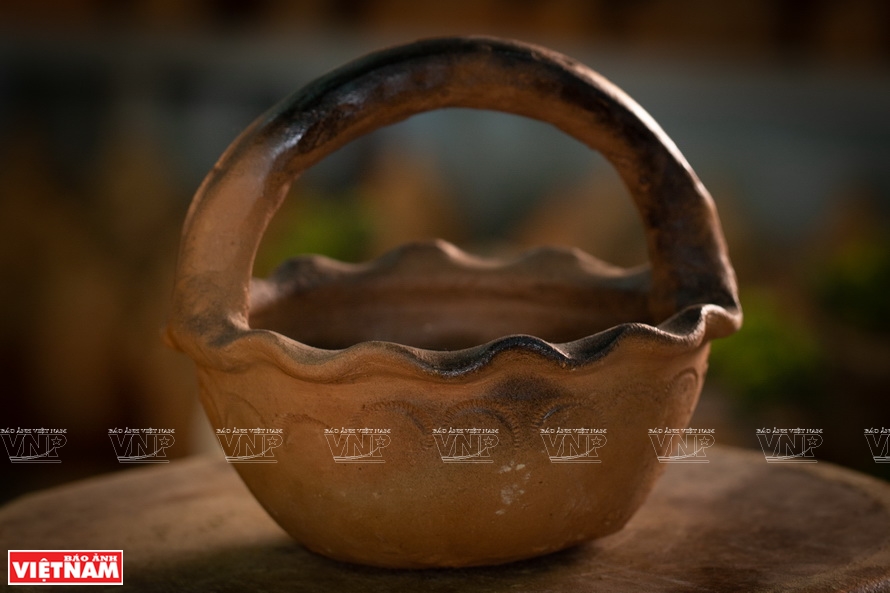 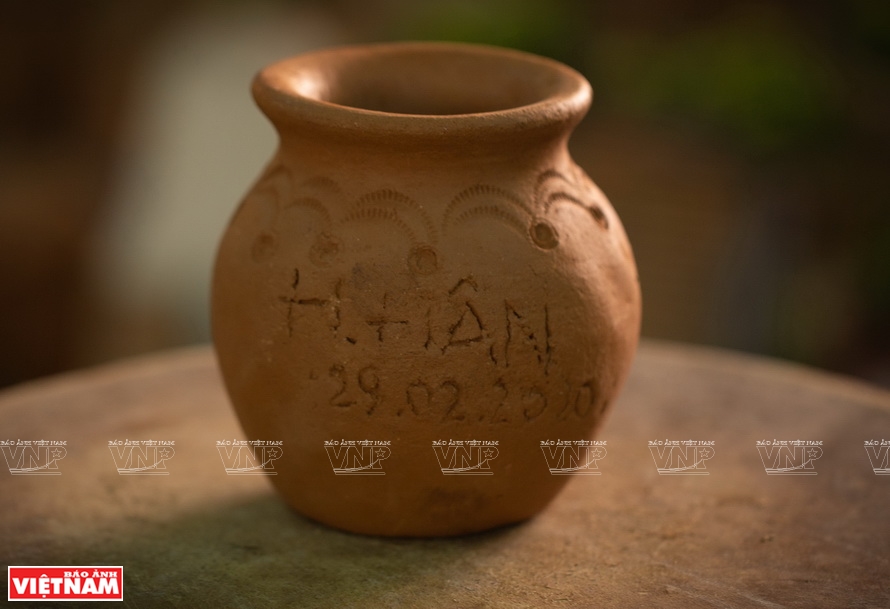  Pottery products in Bau Truc village serve the essential needs of the Cham. Photo: Nguyen Luan 
Pottery items with unique colors are made by skillful artisans
and the specific firing method using straw. Photo: Nguyen Luan |
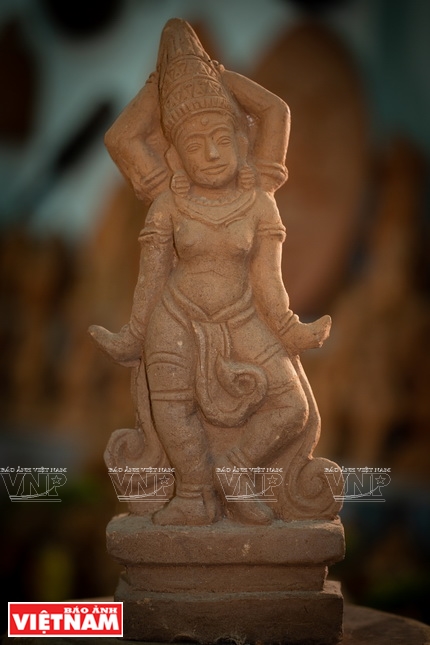 |
 |
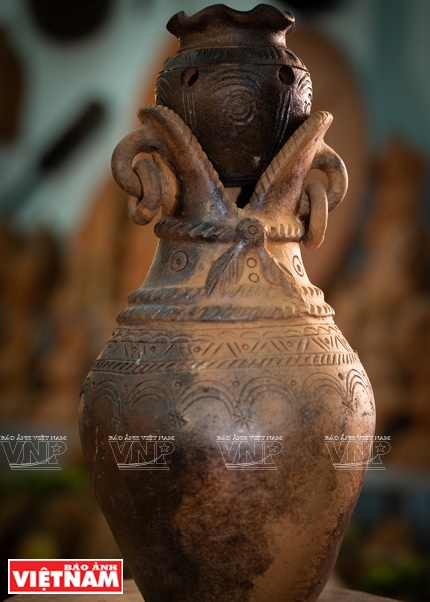 |
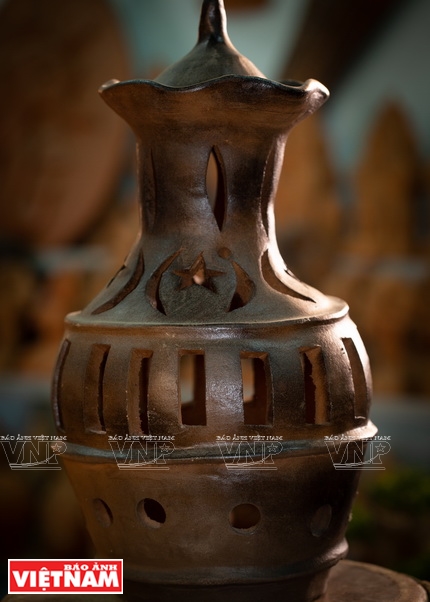 |
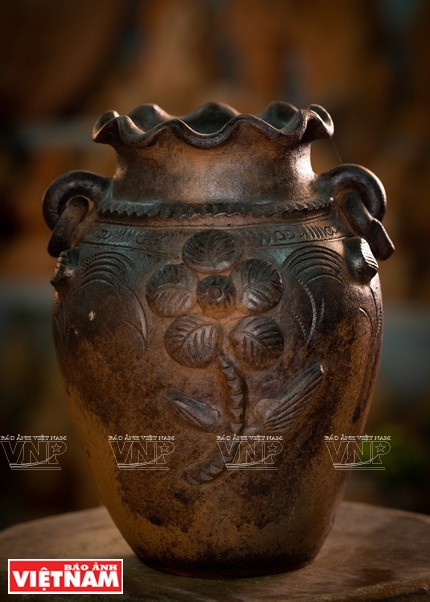 |
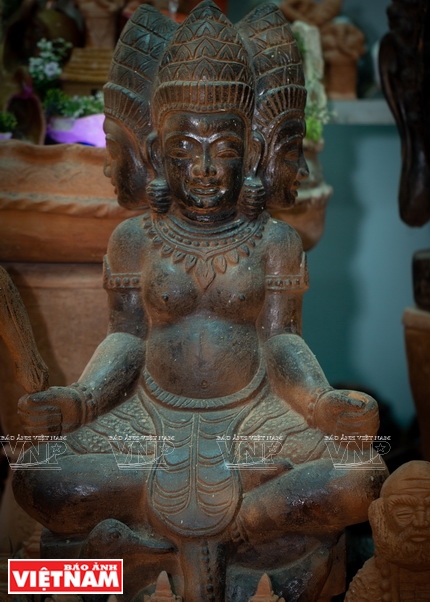 |
Pottery statues reflect the diverse religious beliefs of the Cham in Ninh Thuan province. Photo: Nguyen Luan
|
Cham girls carry ceramic vases on their heads. Inside the vases are pure water or tea offered to a god. Photo: Files 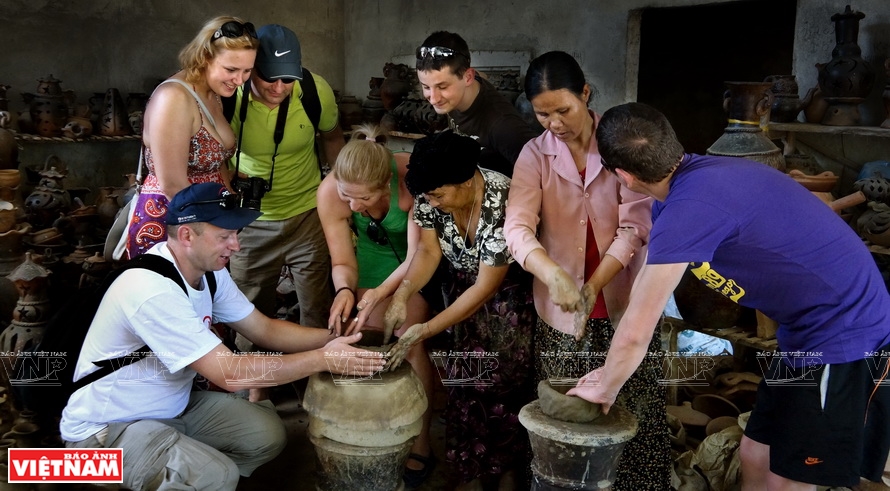 Visitors are interested in making BauTruc pottery. Photo: Files Visitors are interested in making BauTruc pottery. Photo: Files |
Professor Leedom Lefferts from the US spent over 20 years visiting coastal villages in central Vietnam to learn about the pottery of the Cham. Professor Lefferts said Cham ceramics are distinguished from others because each item is one of a kind.
| In March 2019, the Prime Minister gave the green light for the Ministry of Culture, Sports and Tourism to submit a proposal dossier on “the Cham pottery making art” to UNESCO for consideration to include it in the list of intangible cultural heritages in need of urgent safeguarding. |
Dr. Atthasit Sukkham from Thailand said that Cham pottery is popular at religious establishments in Southeast Asia in general and Thailand in particular, citing their presence at temples in the northeastern region of his country.
Vietnamese architect Tran Hung who lives in the US was fascinated by Cham pottery when he visited Bau Truc village several years ago. Hung then started a project to decorate resorts, hotels and recreational centers with Bau Truc pottery. That was how the first shipment of over 500 Cham ceramic items was exported to the US. The items included Siva and Ganesa statues, statues of women praying for rain and Apsara dancers, Apsara-patterned reliefs, and decorative lamps. There are now Bau Truc pottery showrooms in California, Texas and Arizona in the US.
Story: Son Nghia - Photos: Le Minh, Nguyen Luan & Files



